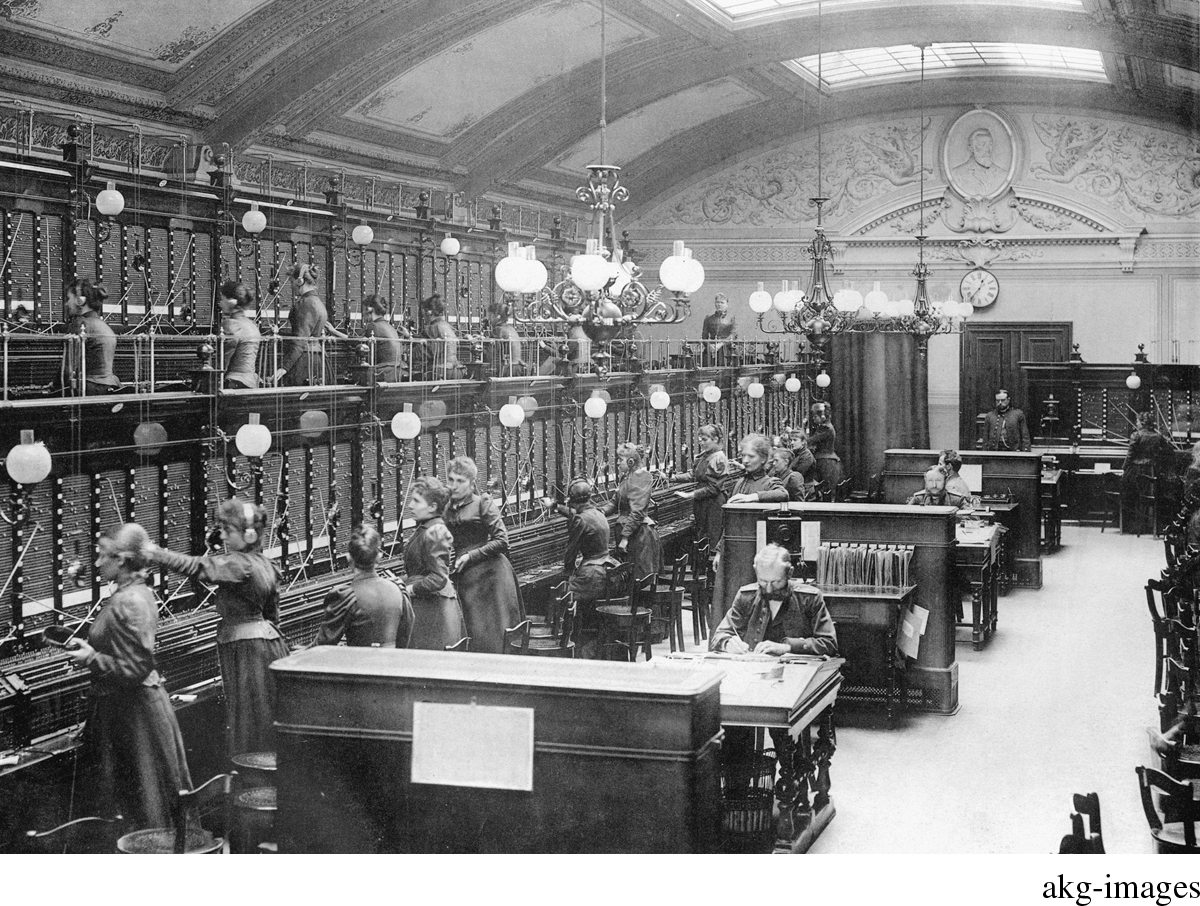Revolution in Business Practices
Printed Page 759
Important EventsRevolution in Business Practices
Industrialists also tried to minimize the damage of economic downturns by revolutionizing the everyday conduct of their businesses. Instead of running their firms on their own in the late 1800s, industrialists began to hire managers specializing in a particular aspect of a business—such as sales and distribution, finance, or the purchase of raw materials. A white-collar service sector, composed of workers with mathematical skills and literacy acquired in the new public primary schools, emerged as part of the development of management. Businesses employed armies of secretaries, file clerks, and typists to guide the flow of business information.
Women, responding to the availability of clean, respectable work, formed the bulk of service employees. At the beginning of the nineteenth century, middle-class women still tended businesses with their husbands, but the new ideology of domesticity became so strong that male employers were unwilling to hire married women, and women in the lower-middle and middle classes were themselves ashamed to work outside the home. By the late nineteenth century, the costs of middle-class family life had increased, especially because school-attendance laws meant that children were no longer contributing to family resources by working. Whether to help pay family expenses or to support themselves, both unmarried and married women of the respectable middle class increasingly took jobs despite the ideal of domesticity. Since society had come to believe that women were not meant to work or even not fit to work, businesses made greater profits by consistently paying women in the service sector much less than they would have paid men for doing the same tasks.
The drive to boost consumption led to the development of the department store. Founded after midcentury in the largest cities, department stores such as the Bon Marché in Paris and Wanamaker’s in Philadelphia gathered an impressive variety of goods in one place in imitation of the Middle Eastern bazaar. Unlike stores that sold single lines of goods such as dishware or fabrics, department stores were modern shopping palaces built of marble and filled with lights and mirrors. In the department store, luxurious silks and embellished tapestries spilled over railings and counters to stimulate consumer desire. Frenzied shoppers no longer limited their purchases to necessities. Department stores became the domain of women, who came out of their domestic sphere into a new public role. Stores hired attractive salesgirls, another variety of service workers, to inspire customers to buy. Department-store shopping also took place outside of cities: glossy mail order catalogs from the Bon Marché or Sears, Roebuck in Chicago arrived regularly in rural areas, with both necessities and exotic items from the faraway dream world of the city.

REVIEW QUESTION What were the major changes in Western industry and business by the end of the nineteenth century?
Consumerism was shaped by empire. Travelers like Frieda von Bülow and Carl Peters journeyed on speedier ocean liners, carrying quinine, antiseptics, and other medicines as well as cameras, revolvers, and the latest in rubber goods and apparel. Colonial products such as coffee, tea, sugar, tobacco, and cocoa became more widespread for the stimulation they offered hardworking Westerners. Tons of palm oil from Africa were turned into both margarine and soap, allowing even ordinary people in the West to see themselves as cleaner and more civilized than those in other parts of the world, including areas from which those raw materials came. Empire and industry jointly shaped everyday life by exciting the desire for things—whether industrial goods or products from the colonies.